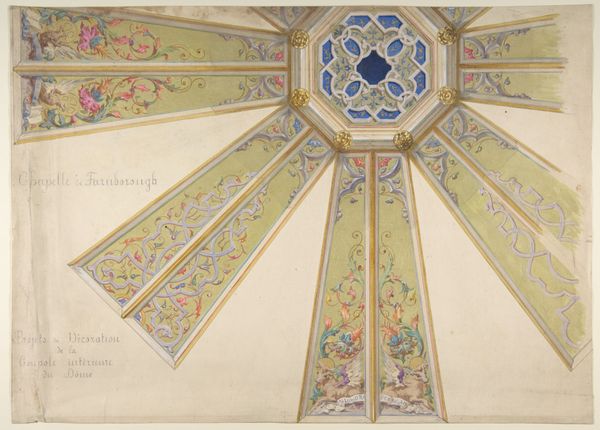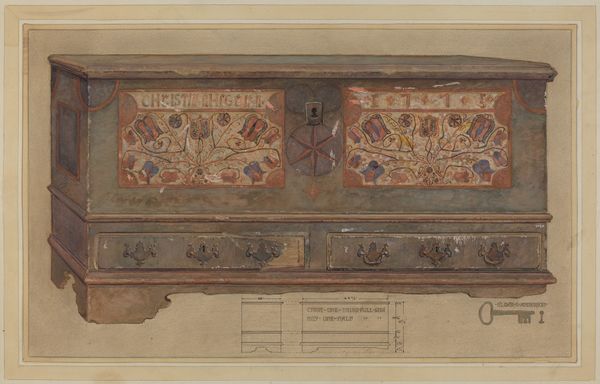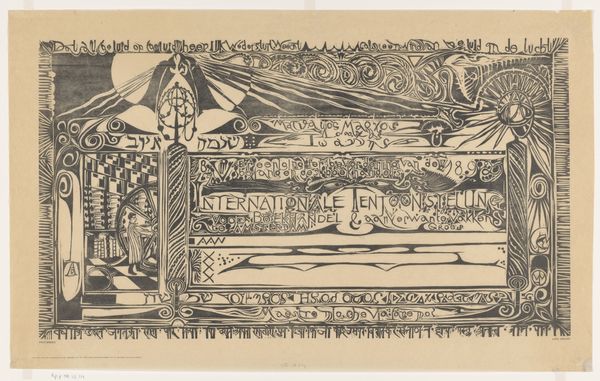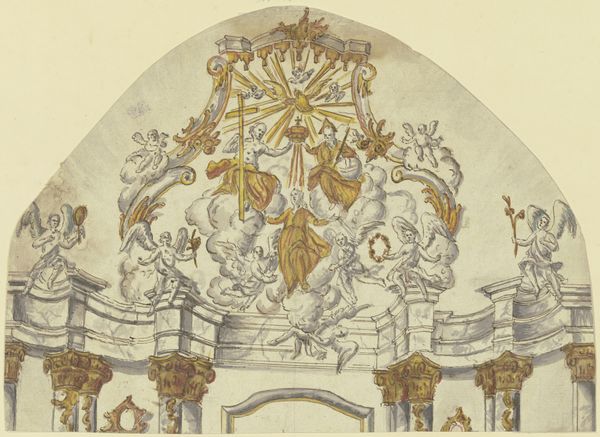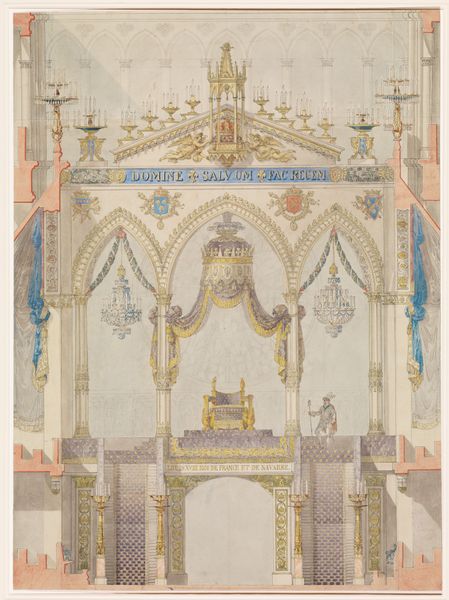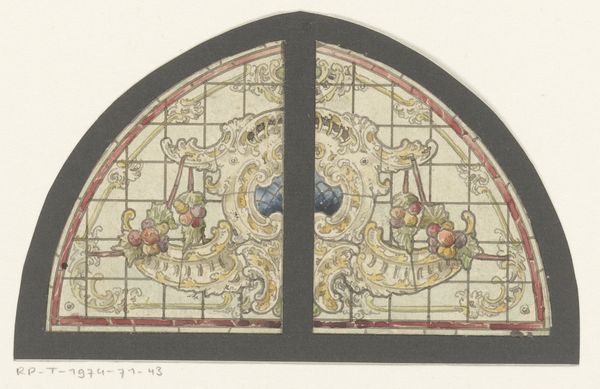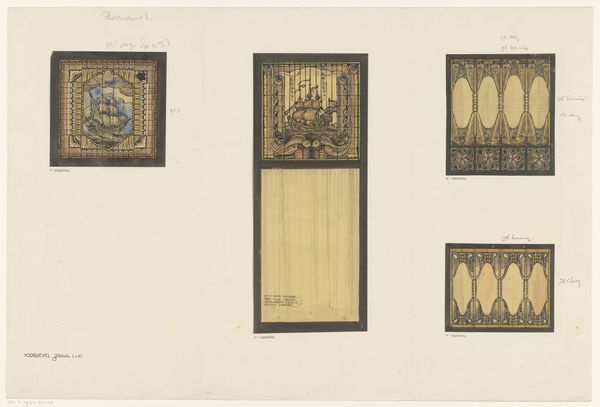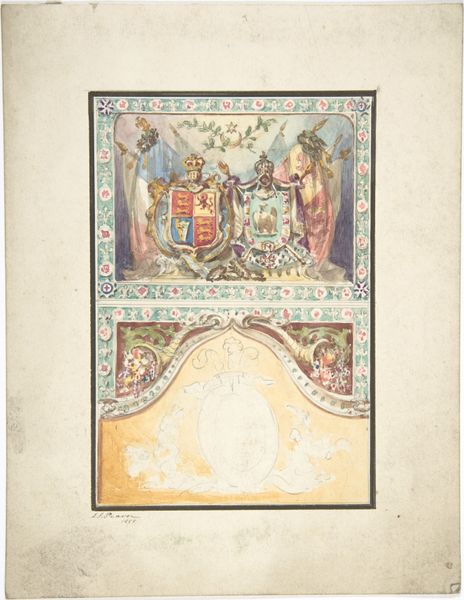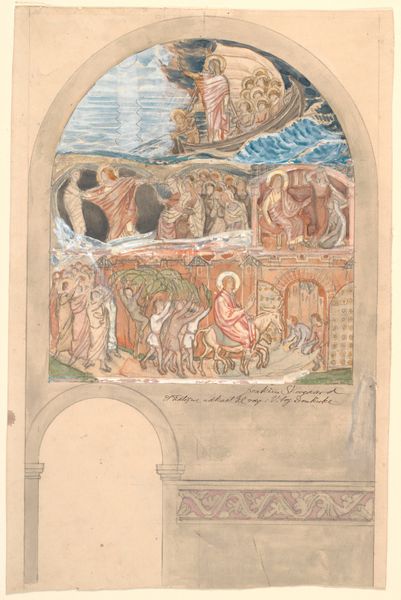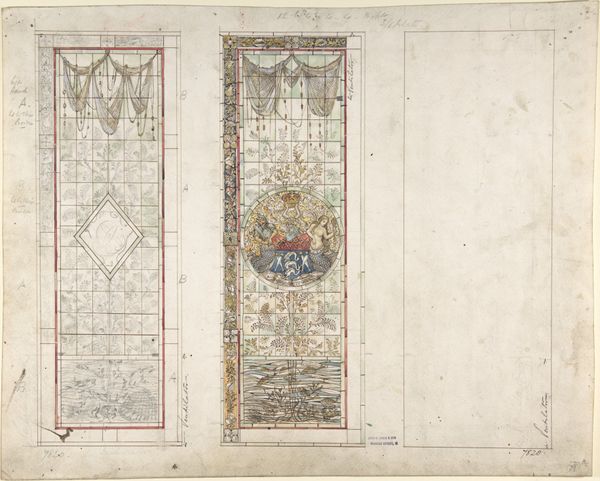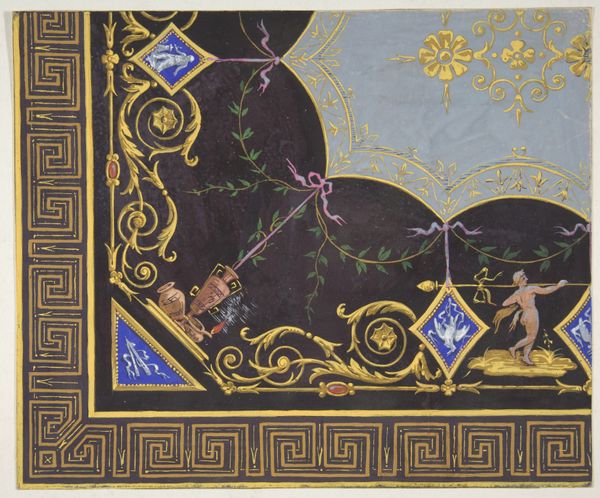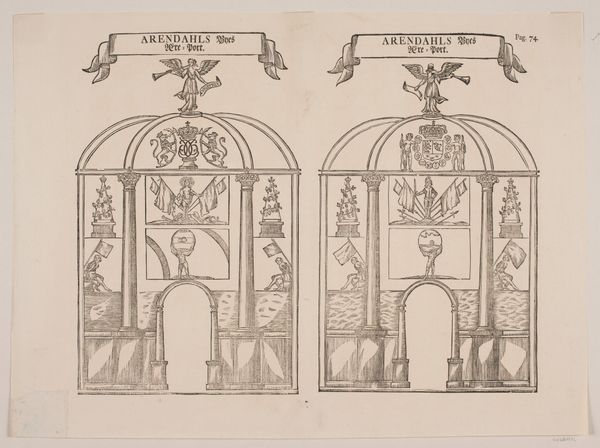
Dimensions: height 248 mm, width 580 mm
Copyright: Rijks Museum: Open Domain
Curator: This intriguing work is a design for a stained-glass window, created in 1923 by Richard Nicolaüs Roland Holst. It was intended for the post office in Utrecht, and what we're looking at here is a mixed media drawing that gives us a good indication of the eventual artwork. Editor: It's quite striking, isn't it? Almost like a Byzantine mosaic but rendered with the bold lines and simplified forms of Art Deco. The colours are muted yet still rich. I get a sense of industry and progress, but also something a little…didactic? Curator: The artist was heavily involved in the Dutch socialist movement. His aesthetic aimed for public edification, using art to communicate shared values. The symbolism reflects themes of industry, communication, and Dutch identity – central to the post office’s role. Editor: Looking at the separate sections, each panel appears to represent something different, perhaps linked to the functions or geographical reach of the post office. “Tropen” referring to the colonies and ‘Telegrafie” representing the technology connecting them all? But the figure in "Vaderland," Fatherland, looks like a fairly domestic scene compared to all the labour happening elsewhere, what’s your reading on that choice? Curator: It suggests an idealized vision of national identity rooted in home and family. Stained glass also carried potent medieval and religious associations, bringing tradition and solidity to these forward-thinking images of telecommunications. Editor: So it’s projecting this comforting stability onto this network connecting the entire globe, almost naturalizing what was new and transformative at that time. Seeing art incorporated in this kind of propaganda, though beautiful, does push me to wonder about art’s role, and our own complicity, in advancing these kinds of grand narratives. Curator: It presents a unique synthesis of the period: functional design imbued with idealistic fervor, where modern progress and a somewhat nationalistic sentiment intertwine, as viewed through an allegorical lens. Editor: Exactly. It leaves me reflecting on how infrastructure, even something as mundane as a post office, becomes a site of ideological messaging, visualized for the public to consume.
Comments
No comments
Be the first to comment and join the conversation on the ultimate creative platform.
